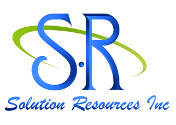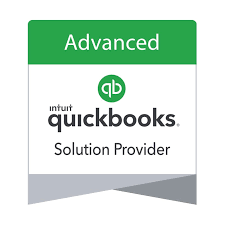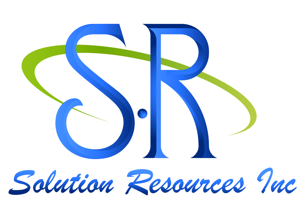|
QuickBooks is listed as one the top 15 Accounting Software Programs
|
|
|
Business Loan Tips! Ready? Set? GO! Well, in the real world, you don’t fill out an application on your phone and magically you get a Rocket Mortgage. There’s a lot of work associated with getting a business loan. Whether you’ve exhausted your savings or it’s simply time to get serious about funding your business to achieve your goals, before you head to the bank, there are some things that you need to understand about what the banking industry is looking for in granting loans. Knowing the right time to apply for a loan to help grow or sustain your business is very important when planning your financial future; however it is only a part of the whole. We’ve prepared this document with helpful tips for small business owners who are interested in borrowing money ---- to start, grow or expand their businesses. We hope to help you understand how to prepare a loan package for a lender, explain how a lender will evaluate your loan request and lastly, provide access to resources that can assist you in preparing a loan package. Getting a business loan is an age-old problem. Most entrepreneurs find it to be one of the greatest struggles they face. While the process can be time consuming and even frustrating, your chances of being successful are greatly increased, if you are informed and well prepared. Being informed means doing your homework and understanding the borrowing process. Being prepared, means putting together a meaningful loan package that addresses the most common questions a lender will ask. Start with the end in mind. What is the most important thing? Getting the money you need to grow your business or address working capital needs. So to do it right, put yourself in the lender’s shoes. What would be some of the risk factors needing to be addressed before lending money to this particular borrower i.e. you? The borrower will ultimately have to sell the lender on the idea that their business is worth investing in and the return on their investment is worth those risks. After the potential borrower has sold the banker on this idea, now it’s time to discuss the terms and conditions of the loan that the borrower id requesting. This is where the question of “how much” is answered and the repayment plan is offered. Lastly, being that we are all so busy, time would probably be of the essence. Therefore, it would be very important for them to cut to the chase when convincing you that this investment you are making into their business is a win-win relationship for both parties. In short, in order to prepare a loan request, it is important to have a thorough presentation, but in the same manner getting to the point of the matter is essential. As the borrower, you need to be proactive and answer questions such as: - What is the specific purpose of the loan? - How much of a loan are you requesting? - When and how long will you need the funds? - How will the loan will be repaid? - What collateral can be used to secure the loan? - And, Will you provide a personal guaranty? Answers to these questions, and a few more, as well as supporting documentation are essential to the lending decision and will shape your lender’s response. Let’s look at each of these items. Some questions you need to answer and if the answers are no, work towards fixing the issues, are…. 1. Do you have a good personal credit history? a. The theory is -- people are creatures of habit – if you have repaid prior debts on time and in full, you will likely pay this requested loan on time. 2. Have you filed and paid all personal and business income taxes? 3. Does the business have the ability to repay the loan? 4. Does the business have a positive net worth? a. If you have loans from shareholders and able to subordinate these while you pay the loan back, these can be considered to be equity. Make sure you get it in writing and classify them as long-term in the financial statements. 5. Is your business not carrying too much debt? Target a debt to equity ratio of 4 to 1. 6. Do you have enough of your own money in the business? a. Owner equity infusion shows the owner believes in the business enough to risk their own money. Many banks like to see the owner put up 20% of the required funding. 7. Do you have collateral to secure a business loan? 8. Are you willing to personally guarantee a loan? a. Lenders usually ask owners of 20% or more of the equity interest to sign personal guarantees as kind of a back-up collateral in case things go bad. 9. Does your business have qualified managers and advisors? a. As a business expands, it needs more sophisticated management as it relates to strategic planning, marketing, record keeping, inventory control, personnel, etc. 10. Do you have experience in running your own business? Credit, you and your business. Good credit is the most important factor in getting a loan. First, know your credit score. There are two types, personal and business. Many are unaware of the business credit score, but we can help you there. Then understand the 5 C’s of Credit: 1. Capacity 2. Capital 3. Collateral 4. Conditions, and 5. Character. Capacity. This means what is your capacity to repay. How will the repayments be funded? Lenders look at cash flow first. Be prepared to answer timing. Bankers lending strategy is to gauge the probability of repayment. Payment history on existing debt is indicative of future performance, and finally, they sometimes ask for contingent sources of repayment, cosigners or personal guarantees of minority shareholders, for example. Capital. If you have a significant personal investment in the business, you are more likely to do everything in your power to make it succeed. Collateral. Whether it be brick and mortar for a mortgage note, equipment for a term loan or inventory and receivables for a line of credit, collateral is important. It is the bank’s back-up or a second source of payment. Personal guarantees are an additional means of security. Conditions. What is the intended purpose of the loan? Is it outlined in the business plan and loan application? Is there anything in the local or industry climate that could impact your business? Character. This is totally subjective, but banks consider the general impression you make. Do you send our vibes of trustworthiness? Educational background and experience in business or your industry counts along with the quality of the references provided. Even the experience of your employees is considered. Need help with the Credit Score Determination? Small Business Owners who understand their business credit scores are 41% more likely to get the loan. Here is a valuable tool to help you understand you credit score. (www.nav.com) This tool is free for the basic level. If you are thinking about financing in the next 6 months, the premium plan is $29.99 per month. Nav.com has Proprietary MatchFactor technology that analyzes your credit profile, compares it with hundreds of top business lender and credit cards, creates scores that show chances of being approved, and all without affecting your credit. They also have self-serve tools to help build business credit. * Disputes allows you to contest credit errors with a single click * BusinessLauncher helps you take an idea for a business from concept to launch and set up for growth. * Goals provides simple tasks for you to complete to help improve your credit scores. There are also trusted security features, which encompasses a credit bureau-level security that keeps your personal data safe, while 24/7 monitoring and alerts protect your credit. Now we will go through the Business Application Process so you will be familiar with the process. The loan application form. Think of this as the end product with everything else as documentation or exhibits supporting it. Gather the information before you actually fill out the form. Be prepared to answer why you are applying, how the loan proceeds will be used, what assets need to be purchased, what other debt do you have, who are your suppliers and creditors. Who are the members of your management team and finally, what is your personal background? The key to maximizing the loan amount and getting the best terms is to present the lender with a well-thought-out loan request package. Lenders are overwhelmed with loan requests today and they focus on the deals that require the least amount of time. If they don’t understand your request or if there is missing or incorrect information, they will likely put the deal behind other requests that they can quickly review and quote. .. Let’s now consider what a loan request package should look like. It is important to point out..., loan packaging is not an exact science. In fact, loan packaging means different things to different people. A good package will tell a compelling story and answer most, if not all questions, a lender may have about your business and loan request. It will provide enough information and documentation so that your loan request is clearly understood and that your lender could discuss and defend it before a loan committee. There are three major components of a loan package, with some components containing multiple parts. Again, this is not an exact science and different lenders require different things. However, for our discussion and general purposes, we will focus on the following components: statement of purpose, business plan and financial statements. The Business Plan. Having a comprehensive, well-thought-out business plan is essential to the financing process. You need a business plan before a lender will provide a loan. In fact, without one, even approaching a lender may be pointless. Include a current business plan, with at least the following sections: 1) Business description & vision, 2) Market definition and analysis, 3) Description of products and services, and 4) A brief overview of your organization and management. Start with the statement of purpose, which is a critical component of the loan package and is sometimes developed within a letter to a specific lender or is otherwise labeled the “executive summary” and is attached to the business plan. How it is done is up to you...What’s important is that it be well written and informative, as it’s likely to be the first thing the lender reviews. It should include information about the request in terms of amount, purpose, duration, repayment, available collateral and the owner’s capital invested. It also should include a brief description about the business and include a crisp narrative outlining the positive effects the loan will have on the business. This is a summary. You can expand later in the document. Mission, Vision and Business plans are discussed at http://solutionresources.org/sucess.htm, which discusses mission and vision for the Company and provides you with ideas to keep you focused on where you want the company to be. Furthermore, you need to analyze the strengths, weaknesses, opportunities and threats to the business and incorporate those into the plan, along with how to accentuate the positive and respond to or eliminate the negatives. Microsoft Office has free templates available to guide you in documenting the strengths, weaknesses, opportunities and threats. After you have gone through this exercise, convert each activity into clear and measureable goals that are time driven and can be monitored. As so often quoted, if you can’t measure it, you can’t manage it! And of additional importance, measurements help us to know when we have achieved our objective. With goals established (some financial, some non-financial, some customer driven, some employee driven, etc.) and prior year financial statements in hand, translate the result of your brainstorming session into meaningful measurements. You can start from your past financial results and tweak the budget to arrive at realistic financial results, and targeted key performance indicators. Financial statements with supporting documents are included as an attachment to the business plan and addressed herein. Some background info you need… 1) Why should you define the purpose of a loan request? A lender will review your financial requirements based primarily on two types of capital infusions, working capital and growth capital. o Working capital is used to meet fluctuating needs that will be repaid during the company's next full operating cycle, generally one year. o Growth capital is used to meet needs that will be repaid with profits over a select period of time. If seeking growth capital, you will be expected to show how the money will be used to increase profits sufficiently to repay the loan in the agreed-upon time frame. 2) How much? How much of a loan do you need to support specific business needs? This is the question you should address, NOT, how much can I borrow? Clearly defined business needs should be tightly aligned with the amount of financing you are requesting. How accurately and convincingly you speak to this will often determine your lender’s interest in your request and set the tone for further dialog. Remember, 100% financing is not an option. And, never ask to borrow money you don’t need. 3) Loan Maturity & Terms? A lender will want to know how long you need the borrowed funds. The reality, however, for working capital or asset-based loans is that the loan maturity will be tied to the amount of time needed to satisfy specific cash flow issues or the life expectancy of the asset being purchased. For instance, working capital loans or lines of credit would have short-term maturities, typically under one year. To please the lender, ideally the working capital loan should have frequent draws and repayments over the term of the loan, making it obvious that it is a working capital loan and paving the way for a smooth transition for next year. An asset-based or equipment loan, perhaps to purchase a business vehicle or machinery, could have a maturity tied to the life cycle of the asset, but is generally 5 to 7 years. 4) Repayment? As you can probably guess, loan repayment is a big deal to a lender. You should give serious and careful consideration to how your business will repay a requested loan. A lender will examine past and projected financial statements to determine if your company can and will generate sufficient cash flow to service new debt, with on time payments. Remember, the lender will be looking for documented evidence and assurance that a given loan can and will be paid on-time and in full. A lender’s concerns are no different than your-own. If you were going to lend money to a friend or acquaintance, you would want assurances that the debt will be collected as agreed. 5) What Collateral is available to secure the loan? Collateral is another major piece of the financing pie. Lenders find comfort in using collateral to secure a loan. Remember, it’s all about lowering risk. The question will be asked so you might as well prepare yourself. What collateral do you have, or will you acquire with loan proceeds, that is available to secure your loan request? Examples of collateral include: real estate, inventory, savings, stock, equipment and motor vehicles. For instance, a lender may secure a working capital loan with inventory and accounts receivable. In another example, a lender may secure an asset loan with the asset or equipment being acquired. In both cases, the lender would probably ask for a personal guarantee as well. Lenders can be very creative in using collateral to secure a loan. Consider all of your options. To prepare yourself, identify available collateral, estimate its value and be prepare to provide supporting documentation to justify its worth. 6) Personal Guaranty It is almost a certainty that you will be asked to provide a personal guaranty, if you borrow money for a small business. It matters NOT, that your business may be incorporated. As we said earlier, it’s all about lowering risk. A personal guarantee means that you are willing to pledge your personal assets to protect the lender, in a situation where you are unable to repay the loan. 7) Your resume. This should provide the personal information needed, such as, previous addresses, educational background and evidence of management or business experience. Other Components of a Loan Package Financial Statements Financial statements are a critical and necessary component of a loan request package. They tell a story about the financial capacity and performance of a business. A well prepared package will include four types of statements: cash flow statement, income statement, balance sheet and personal financial statement. Many of you may have heard of Management’s Discussion and Analysis, or MD&A. This is required for public company filings with the Security & Exchange Commission. Private companies can take a page from their playbook and include an overview introducing the lender to the company and get them up to speed on the company and its performance. Keep the overview brief and use a top down approach. Think of Rip Van Winkle waking up and asking, “What did I miss?” And as you answer it, answer the “Whys?” too. Each of the financial statements is discussed in the following sections. Balance Sheet The balance sheet represents the basic accounting equation: assets minus liabilities, equals net worth. It is a snapshot of business financial capacity at a specific point in time. If you are a new business, your loan package should include a balance sheet representing assets and liabilities, as of your planned opening date, and another, projected for twelve months after your opening date. If an existing business, include balance sheets for the last three years, if available. Occasionally, lenders will ask for accounts receivable and accounts payable agings and inventory listings. Income Statement The income statement is a measure of how a business has performed over a specific period of time, usually six months or one year. It measures all income less all expenses to arrive at the amount of profit or loss generated by the business for the period. If your business is a new venture, your loan package should include a projected income statement, projected for twelve months out. If you are an existing business with a history, include income statements for the last three years, if available. Your lender may also request a current interim-income statement. If there are any unusual fluctuations then be proactive, answer them in a written summary overview included in the loan package. Remember Rip Van Winkle? If you are in an industry, for example construction, where estimates are critical to ascertaining earned revenue, you also need to discuss critical estimates as well. Provide detail supporting schedules, including Job summaries, open and closed. What the bonding company asks for, the bank will too. Cash Flow Statement A cash flow statement is used to monitor and project incoming and outgoing cash, typically on a monthly basis. It helps you and your lender determine how much cash your business will have on hand at any point in time. If your business has or will have a negative cash position, it means that at a given point in time you have more money going out than coming in and you will probably not be able to pay your bills. Obviously, this type of information will get a lender’s attention. Your package should include a current twelve month cash flow statement, projected for at least six months out. All cash projections should be realistic and supported. Personal Financial StatementA personal financial statement is a simple balance sheet measuring net worth. It identifies personal assets and debts to help a lender determine a borrower’s net worth. This statement is important to the overall loan request, because it helps the lender evaluate a borrower’s financial capacity and ultimately the value of the personal guaranty. For a template to help, go to: treasury.tn.gov/smob/Documents/PersonalFinancialstatement.xls Other supporting documentation: o Income Taxes. You will be asked for the last 3 years of tax filings for your individual and business taxes. If you haven’t filed or paid, fix it now. o Business Licenses o Articles of Incorporation (sometimes banks get them directly from online filings.) o Commercial Leases o Third Party Contracts o Franchise Agreements Loan Packaging Tips OK We have talked about what a lender will want to know and what should be in a loan package. Let’s now consider some helpful tips in pulling it all together. The loan package should: o Be brief, to the point and easy to read. This is important. o It should emphasize the management strength of your business. Convince the lender that you and your team have the skills, passion and expertise to be successful. o Your loan package should present attractive projections that paint a realistic picture with substantiated assumptions o Throughout the package you should weave in the theme: “this is how you will get your money back.” Lenders want to know how and will they will get their money back. o Importantly, proofread what you prepare. Better yet, have someone else go through it for spelling, grammar and style. o And finally, learn from your mistakes. If you get rejected from one lender, find out why and FIX the problem. After you submit your loan request to a lender, how will it be evaluated? Your lender will review your request using three key credit factors. But first, it’s important to point out -that lenders are in the business to make money and the way they make money is by making loans. However, a loan officer’s career is based on not making mistakes. The bottom line..... you have to convince the lender that you and your business are a good risk. A properly prepared business plan with financials and projections indicates that you are knowledgeable about the cash coming into your business and being spent. In the lender’s mind, it shows that you are “financially aware” and that you may be better able to avoid a cash shortage that would jeopardize making monthly loan payments. Remember, it’s all about lowering risk so the lender feels confident the loan will be paid on time and in full. It’s time consuming to do it right, but if you understand and meet lender expectations, you are on your way to growth and success. Solution Resources can help you in this process, contact us at 800-269-0153.
|







